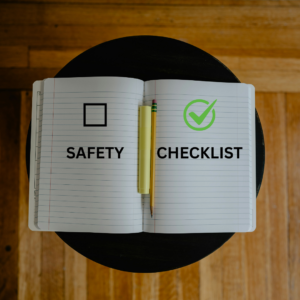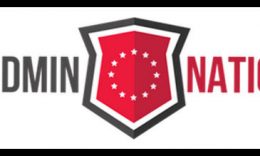Children’s Ministry Safety Checklist

Using lists can improve memory, increase productivity, and even help reduce anxiety. Simply crossing off items from a list provides a sense of achievement and boosts motivation to keep going and accomplish more.
That’s why a safety checklist can be a powerful tool to help you focus on what matters most: connecting with families, increasing accountability, and boosting safety awareness, which reduces the risk of accidents, injuries, or abuse incidents.
Including this safety checklist in your fall task routine will help establish a solid foundation for years ahead.
1. Update Background Checks and Complete Volunteer Screening
- Verify that all staff and volunteers have up-to-date background checks.
- Ensure all new volunteers have or are completing the comprehensive screening process.
2. Check Emergency Contact and Medical Information
- Ask families to review and update their children’s emergency and medical
- Ensure allergy alerts and medical needs are documented and visible for teachers and staff.
- With KidCheck, families can easily keep all important information up-to-date in their parent maintained KidCheck account.
3. Train on Abuse Prevention Policies
- Revisit your child protection policy with your team. Update if necessary or work to assemble a team to pull one together.
- Hold mandatory weekly 10-minute huddles on recognizing and reporting abuse, establishing appropriate boundaries for touch and discipline, and other safety guidelines.
4. Assess Your Check-In/Check-Out System
- Test your check-in and check-out processes to make sure they’re functioning correctly and update as needed.
- Train all staff and volunteers on the drop-off and retrieval procedures.
- In addition to children’s check-in, implement a youth-specific check-in
5. Examine Classrooms and Facilities
- Look for potential safety hazards, such as loose wires, tripping hazards, burned-out light bulbs, locks that don’t work, etc.
- Make sure all exits are marked, and emergency routes are posted.
6. Restock First Aid Kits and Emergency Supplies
- Refill bandages, band-aids, gloves, sanitizer, sterile wipes, gauze, etc.
- Confirm fire extinguishers are easily accessible and up to date.
7. Review Emergency Protocols
- Post and walk through with your team fire, lockdown, and evacuation procedures.
- Assign and train emergency roles (who calls 911, communicates with the security team, leads children to safety, etc.)
- Download and customize the KidCheck Emergency Instructions Flip Book.
8. Launch a Family Communication Plan
- Keep families informed about safety upgrades, changes to check-in and out procedures, volunteer standards, and updates to health and wellness procedures.
- Provide contact information for reporting concerns or questions.
- There are multiple ways to communicate with families built right into KidCheck.
9. Establish Classroom Ratios and Supervision Guidelines
- Set and maintain recommended adult-to-child ratios (e.g., 1:4 for preschoolers).
- Ensure your teams understand no adult is ever alone with a child (the “Rule of Two”)
10. Set and Communicate Bathroom Protocols
- Review supervision and hallway procedures for bathroom
- Make sure protocols include two fully screened adults, same gender escorting, and visibility rules.
- Don’t forget to utilize your security team to help with bathroom breaks.
Safety doesn’t happen by chance, and no organization does it perfectly. So, whether you check off one task or several on the list over the next year, the goal is to keep improving safety and protection.
Click here to learn more about the benefits of using secure mobile Express Check-In, children’s and youth check-in, and volunteer scheduling to help manage your events.
For more safety info, subscribe to the KidCheck blog or follow us on X, Facebook, Pinterest, Instagram, and YouTube.


